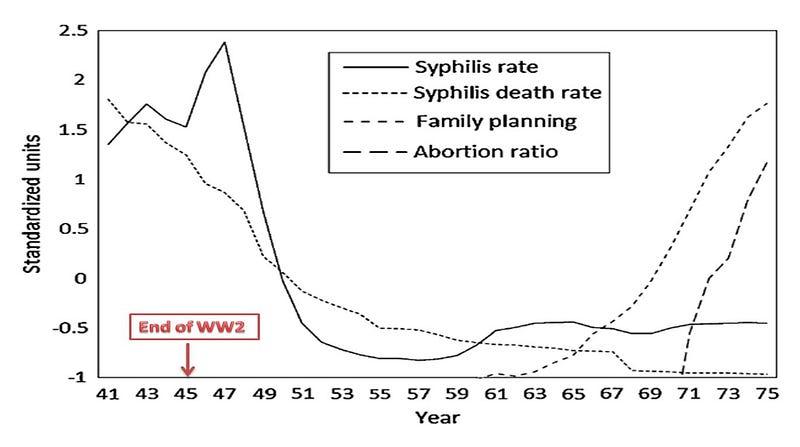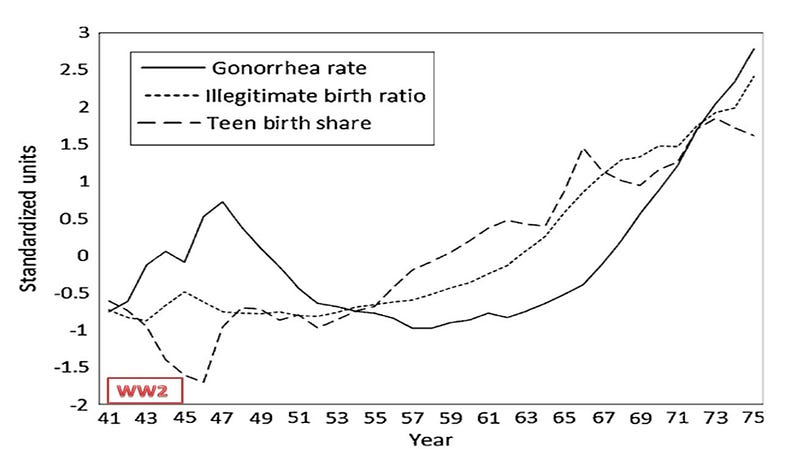The Impact of Penicillin on Modern Sexual Freedom and Attitudes
Written on
Chapter 1: The Evolution of Sexuality
We owe a debt of gratitude to significant scientific advancements.

Photo by Sound On from Pexels
In today's world, sexual exploration and freedom are widely accepted. Conversations around premarital relationships are commonplace, and many share stories of their experiences without a hint of embarrassment. Just yesterday, a friend shared tales of her thrilling time at an event, and we all celebrated her enthusiasm.
While many attribute our liberal views on sexuality to contraceptive advancements and family planning initiatives, evidence reveals that penicillin played a crucial role in shaping contemporary sexual norms.
Let’s take a step back in time and explore this transformative journey.
In the early 20th century, engaging in sexual activity posed significant health risks, especially with the looming threat of sexually transmitted infections (STIs). The absence of preventive measures and effective treatments made STIs a daunting reality, often seen as a fatal affliction.
Who can forget the graphic images presented in health classes? The stark contrast between a healthy organ and one afflicted with grotesque growths is an enduring memory. The mere thought of such conditions is terrifying.
Religious teachings of the era exacerbated the situation. Traditional beliefs suggested that those indulging in immoral behaviors were punished with disease, leading many to equate unconventional sexual practices with divine retribution.
A serendipitous discovery, however, changed the trajectory of medical history.
In 1928, Scottish microbiologist Alexander Fleming returned from a family holiday to find a disheveled workbench cluttered with neglected Petri dishes. As he sorted through the mess, one dish caught his attention: it contained a peculiar mold that had eradicated the surrounding bacteria.
Recognizing the potential, Fleming identified the mold as the source of what he dubbed "penicillin," but he struggled to produce sufficient quantities for extensive study. His findings were published in 1929.
Years later, biochemists Dr. Howard Florey and Dr. Ernst Chain successfully extracted enough penicillin to conduct trials, ultimately saving a policeman's life who was critically ill from an infection. This marked the dawn of the first antibiotic.
By 1941, penicillin was utilized in WWII, effectively treating soldiers for STIs, including deadly syphilis. Post-war, the mass production of penicillin heralded a new era in public health, effectively curing syphilis and transforming societal attitudes toward sexual health.
Description: This video explores how Alexander Fleming's discovery of penicillin changed the world, particularly in the realm of public health and sexuality.
The research conducted by Professor Andrew M. Francis, analyzing data from the 1930s to the 1970s, revealed significant trends regarding syphilis infection rates before and after penicillin became widely available.

Graph adapted from a scientific paper illustrating the decline in syphilis rates post-penicillin.
The data illustrated a dramatic decline in syphilis infections, with rates peaking before the introduction of penicillin and then plummeting to unprecedented lows throughout the 1950s. Notably, the death rate from syphilis dropped significantly, indicating that the disease was no longer a death sentence.
As the stigma surrounding STIs diminished, sexual behavior became increasingly adventurous.
To understand the relationship between decreased fear of STIs and rising sexual freedom, Prof. Francis examined various indicators of sexual behavior, including the incidence of gonorrhea, illegitimate birth rates, and teenage pregnancy statistics.

Graph adapted from a scientific paper highlighting trends in sexual behavior from 1941 to 1975.
The data revealed sharp increases across all three indicators of risky sexual practices. Gonorrhea rates soared by 300%, illegitimate births rose by 250%, and teenage births experienced a notable uptick from the mid-1950s onwards.
Importantly, these shifts occurred well before the advent of modern contraceptive methods, suggesting that penicillin had already set the stage for changing sexual norms.
Conclusion
The discovery of penicillin fundamentally altered the landscape of modern sexuality, effectively eradicating the syphilis epidemic and reshaping public attitudes. By the 1950s, the infection rate had reached an all-time low, allowing for a rise in non-traditional sexual behaviors.
The economic prosperity of the 1950s led to increased access to media, exposing individuals to more liberal depictions of sexuality. The decade also marked significant cultural milestones, from the opening of Disneyland to the first issue of Playboy.
As contraceptive technologies emerged in the 1960s, societal morals shifted alongside them. The fall of the syphilis epidemic and the rise of contraceptive options contributed to a more liberated approach to sexuality.
Sexual expression, images, and the LGBTQ community began to flourish, marking a departure from the taboo nature of sexuality that once prevailed. Today, both men and women embrace their sexual identities more openly, actively addressing issues like the orgasm gap.
This progressive shift can be traced back to the monumental discovery of penicillin, a small yet impactful breakthrough that transformed our views on sexuality.
Description: This video discusses the accidental discovery of penicillin and its significant impact on public health and sexual attitudes in the modern era.